Home > Principle Investigators, Research Themes

| Mechanism of reprogramming by germ cell histones | |
| Manipulation of epigenetic status of hematopoietic stem cells for regenerative medicine | |
| Invention of devices for elevating security level of iPS cells through understanding the molecular mechanisms of iPS cell generation | |
| Towards ideal iPS cells for gene therapy and regenerative medicine using a human artificial chromosome (HAC) | |
| Isolation of molecular markers that represent pluripotency and tumorigenicity of human iPS cells | |
| Analysis of abnormal regulation of cell differentiation and drug development research by using induced cancer stem cells | |
| Analysis of reprogramming mechanism of Germline stem cells | |
| Research on iPS Cell-Derived Dendritic Cells and Macrophages Aiming at Clinical Application | |
| Analysis of the transcription factor network governing establishment of pluripotency in somatic cells | |
| A novel and efficient method of cellular reprogramming using human artificial chromosomes (HACs). |
Mechanism of reprogramming by germ cell histones
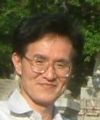
Two histone variants enriched in oocytes have been shown to contribute to early embryogenesis as the maternal effect proteins. They enhnace Yamanaka factor-dependent reprogramming. They induce open chromatin conformation and are enriched on the X chromosome during reprogramming. These results suggest that the mechanism of two histone variants-induced reprogramming resesmbles to that of somatic cell nuclear transfer. This study help to understand the new mechansim of reprogramming.
Manipulation of epigenetic status of hematopoietic stem cells for regenerative medicine
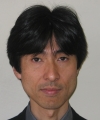
Generation of self-renewing human hematopoietic stem cells (HSCs) from ES or iPS cells is a challenging project. In this project, we first tried to understand the epigenetic status, particularly the histone modification profiles of embtyonic and adult HSCs. We particularly focused on the role of polycomb genes, important regulators of histone modifications, in the development and maintenance of HSCs and identified several key epigenetic machineries that determine adult HSCs. We also established a culture system that efficiently induces hematopoietic stem and progenitor cells (HSPCs) in embryoid body culture by modifying cytokine conditions and adding a TGF-beta inhibitor. Finally, we identified SOX17 as a gene critical for the hemogenic endothelium that produces HSPCs in embryo and in culture. By applying all these results to HSC induction from iPS cells, we hope to provide a road map for iPS cell-based regenerative medicine in the lympho-hematopoietic field.
Invention of devices for elevating security level of iPS cells through understanding the molecular mechanisms of iPS cell generation
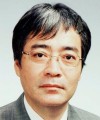
In this project, we have been engaged in numerous subjects about iPSCs such as that of partial iPSCs. We consider that the study about c-Myc is of high quality among them. Indeed, we could accomplish many types of original research on c-Myc in ESCs and iPSCs. For example, we could demonstrate that ground state condition renders Myc activity dispensable for indifinite self-renewarily of ESCs and iPSCs.
Towards ideal iPS cells for gene therapy and regenerative medicine using a human artificial chromosome (HAC)
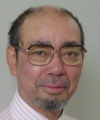
Taking advantage of the characteristics of Human artificial chromosome (HAC), i.e., stable maintenance without insertional mutagenesis, and the ability to carry multiple gene inserts of any size including their native regulatory elements, we constracted HACs that enable somatic cell reprogramming by Yamanaka factors, monitoring of cells during differentiation process, gene therapy for patient-derived cells, and safeguard of therapeutic cells derived from iPSCs. Especially, the evidence that the HAC containing whole genome of dystrophin gene could cure Duchenne’s muscular dystrophy model mouse sheds light on the probable application of an HAC to the regenerative medicine using iPSCs.
Isolation of molecular markers that represent pluripotency and tumorigenicity of human iPS cells
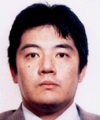
Towards clinical application of human iPS cells, one of essential prerequisites is to gauge levels of the efficacy and security during its therapeutic use. To this end, we tackled to discover molecular markers that predict differentiation capacity and/or tumorigenecity of iPS cells in this study. We particularly focused on lymphocyte-derived iPS cells to test these potentials. We first found that iPS cells derived from NKT cells were capable to efficiently differentiate into NKT cells and iPS-derived NKT cells exhibited anti-tumor activity in living mice. We then observed that iPS cells derived from human melanoma-specific cytotoxic T cells can re-differentiate into mature T cells with anti-melanoma activity. By using these lymphocyte-derived iPS cells, we have performed screening of marker genes that correlate with differentiation capacity and tumorigenecity of iPS cells and successfully identified several target genes that fulfill our criteria.
Analysis of abnormal regulation of cell differentiation and drug development research by using induced cancer stem cells
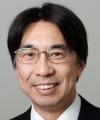
We succeeded to generate cancer stem cells which possess the capacity to self-renew and to cause the heterogeneous lineages of cancer cells from normal somatic cells by introducing particular genetic alterations. In our proposed project, we intend to develop cell-based assay systems using the induced cancer stem cells (iCSCs), which can be applied to screening of chemical compounds and antibodies that inhibit the therapeutic resistant mechanisms of cancer stem cells. We actually identified the compound and are currently applying it to the clinical trial.
Analysis of reprogramming mechanism of Germline stem cells
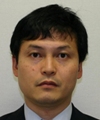
We have focused on germ cell tumor candidate genes and analyzed their function in inducing pluripotency in germline stem (GS) cells. Our screening using p53 deficient GS cells revealed that Dmrt1 is responsible for pluripotency induction. We also found that Sox2 is upregulated upon Dmrt1 downregulation. Because Sox2 mRNA is not translated into protein in GS cells, we overexpressed Sox2 at high viral titers and also suppressed p53 function. The treatment not only induced Oct4 expression but also pluripotency in GS cells. Based on these results, we conclude that Sox2 upregulation induced by Dmrt1 downregulation is responsible for pluripotency induction in GS cells.
Research on iPS Cell-Derived Dendritic Cells and Macrophages Aiming at Clinical Application
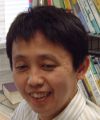
Dendritic cells are the most potent T cell-regulating cells, and macrophages are the most potent scavenger cells. Although these myeloid cells are considered to be useful for treatment of various diseases such as cancer, autoimmune diseases, or Alzheimer’s disease, no method had been available to produce these cells on the industrial scale. In this CREST project, we established a method to generate myeloid cells with proliferating capacity from human iPS cells, and we designated them iPS-ML. Based on the iPS-ML technology, for the first time in the world, we can produce a large quantity of dendritic cells and macrophages with any genetic background. We observed therapeutic effect of iPS-ML against cancer in a xenograft model, and are now planning a clinical trial to apply this technology to cancer therapy.
Analysis of the transcription factor network governing establishment of pluripotency in somatic cells
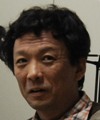
It is a mystery why the combination of few ranscription factors is sufficient to establish pluripotency in somatic cells. In this research project, we revealed how the signals integrate into the transcription factor network to maintain cellular pluripotency and how the functions of transcription factors restricted in the context of the transcription factor network.
A novel and efficient method of cellular reprogramming using human artificial chromosomes (HACs).
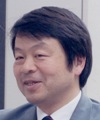
In this project, we found a novel mechanism for the maintenance of embryonic stem cells through the negative regulation of nuclear transport by importin alpha, a nuclear transport factor. We also demonstrated the importance of the nucleocytoplasmic dynamics of Oct4 in cellular reprogramming. These results underscore the significance of the proper subcellular localization of reprogramming factors during cellular differentiation or reprogramming. Furthermore, we succeeded in developing the human artificial chromosome (HAC) vector expressing Yamanaka factors, which also can be removed thereafter, thus, leading to a valuable tool for future regenerative medicine.


